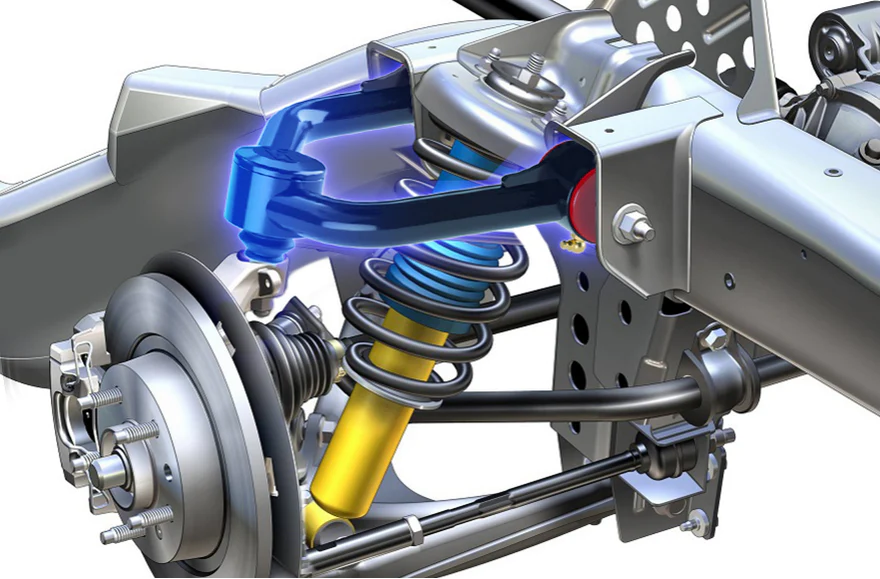In the intricate world of automotive engineering, upper control arms are pivotal yet often overlooked components. They play a critical role in the suspension system of vehicles, directly impacting the ride quality, handling, and overall safety. This article dives deep into the realm of upper control arms on https://www.kspmotor.com, shedding light on their importance, types, benefits, and essential maintenance tips. Whether you’re an automotive professional, enthusiast, or a daily driver, this comprehensive guide offers valuable insights into these crucial suspension elements.
Understanding Upper Control Arms
Upper control arms are key elements in a vehicle’s suspension system, especially in vehicles with independent suspension setups. They are essentially a pair of arms connecting the vehicle’s chassis to the wheel hub, allowing for smooth up and down movement of the wheel. This connection is crucial for maintaining wheel alignment, ensuring the tires remain in optimal contact with the road, and providing stability and comfort during driving.
Types of Upper Control Arms
There are various types of upper control arms, each with its specific materials and design, catering to different vehicle needs:
- Stamped Steel Control Arms: Common in older and budget-friendly vehicle models, these control arms are made from stamped sheet metal. While they are cost-effective, they may lack the strength and durability of more modern designs.
- Cast Iron Control Arms: Predominantly found in trucks and heavier vehicles, cast iron arms offer high strength and durability. However, their weight can be a downside, impacting fuel efficiency and handling.
- Aluminum Control Arms: Preferred in performance and luxury vehicles, aluminum control arms are lightweight yet strong. They enhance handling and fuel economy but tend to be more expensive.
Importance of Upper Control Arms
Upper control arms are fundamental for several reasons:
- Wheel Alignment: They play a vital role in keeping the wheels aligned, which is essential for even tire wear and accurate steering.
- Ride Comfort: By allowing controlled wheel movement, they absorb road shocks, contributing to a smoother ride.
- Handling and Stability: Proper functioning of these arms is crucial for safe handling and stability, especially when turning or driving on uneven surfaces.
Symptoms of Faulty Upper Control Arms
Recognizing the signs of malfunctioning upper control arms is critical for vehicle maintenance:
- Uneven Tire Wear: This often indicates misalignment issues due to faulty control arms.
- Suspension Noise: Squeaking, clunking, or rattling sounds from the suspension can signal worn or damaged control arms.
- Loose or Wobbly Steering: Difficulty in steering or a ‘floating’ feel can be a symptom of failing control arms.
- Visible Damage: Regular inspection can reveal physical damage like cracks or excessive corrosion.
Benefits of Upgrading Upper Control Arms
Upgrading the upper control arms of a vehicle can offer several advantages:
- Enhanced Performance: Superior materials and design can significantly improve handling and stability, especially in performance-oriented vehicles.
- Durability and Longevity: High-quality control arms are more resistant to wear and tear, reducing the need for frequent replacements.
- Improved Ride Comfort: Advanced designs can better absorb road imperfections, enhancing comfort.
- Customization Options: Upgraded control arms can accommodate custom suspension setups, such as lift kits for off-road vehicles.
Maintenance Tips for Upper Control Arms
To ensure the longevity and optimal performance of upper control arms, regular maintenance is essential:
- Routine Inspections: Regularly check for signs of wear, damage, or corrosion.
- Proper Lubrication: Ensure that all joints and bushings are adequately lubricated to prevent premature wear.
- Alignment Checks: After installing new control arms, or periodically, have the vehicle’s alignment checked by a professional.
- Seek Professional Advice: If unsure about the condition of your control arms, consult with a qualified mechanic.
Conclusion
Upper control arms are indispensable components of your vehicle’s suspension system. Their condition directly affects the safety, comfort, and performance of your vehicle. Understanding their role, types, and maintenance needs enables you to make informed decisions about your vehicle’s upkeep. Remember, regular inspections and timely maintenance are key to ensuring the longevity and reliability of your upper control arms, and in turn, your vehicle.
Read more: https://wallstimes.com/

